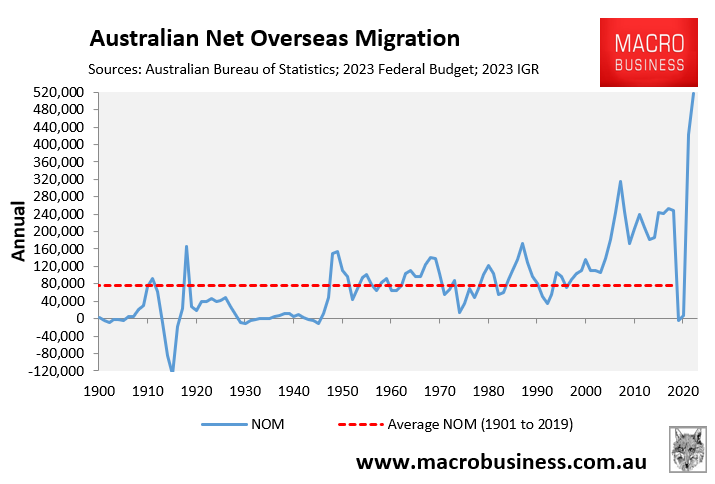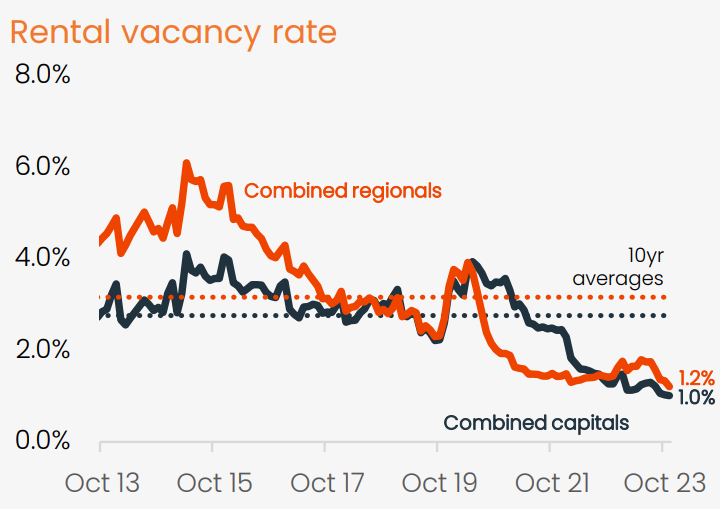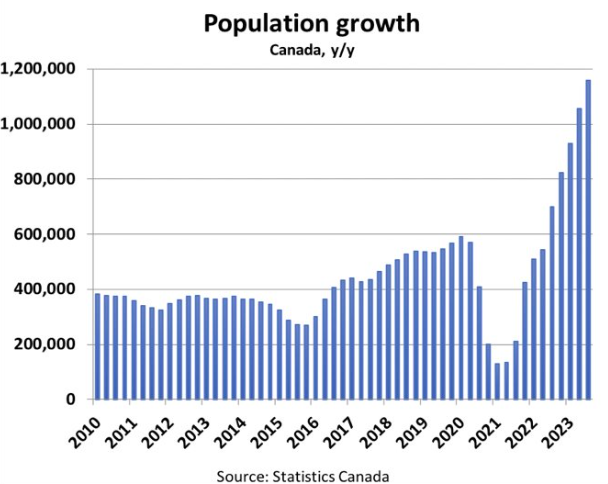Last week’s official net overseas migration (NOM) data from the Australian Bureau of Statistics (ABS) showed that 518,000 net overseas migrants landed in Australia in the 2022-23 financial year, which was more than 200,000 higher than the previous record peak of 316,000 NOM under the Rudd Labor government in 2008:

The impact on Australia’s housing market has been devastating, with the national rental vacancy rate collapsing to an all-time low, after rising at the beginning of the pandemic when NOM briefly turned negative:

Source: CoreLogic
Australia’s rental inflation also briefly went negative at the beginning of the pandemic when migrants left Australia, but has since rocketed amid the recent record NOM:

Similar forces are at play in Canada, which is experiencing unprecedented immigration-driven population growth.
Canada’s population grew by nearly 1.2 million people in the 2022-23 financial year, driven solely by record NOM:

Chart by Ben Rabidoux
In turn, Canada’s rental inflation has shot to the moon:

Chart by Ben Rabidoux
Blind Freddy can see that the housing crises in both countries is being directly driven by both governments’ mass immigration programs, which have completely swamped housing supply.
Much like the Albanese government in Australia, Canadian Prime Minister Justin Trudeau is busy gaslighting the population on the situation, claiming that he is running a responsible, sustainable program:
When asked about reducing immigration numbers to soften demand on housing, 🇨🇦 PM Justin Trudeau claims his government has always been doing immigration responsibly and at a pace that our cities can absorb. 👇🏽 pic.twitter.com/FrWyhxPc6v
— Shazi (@ShaziGoalie) December 16, 2023
Both Justin Trudeau and Anthony Albanese have rightfully experienced a backlash from voters in the polls, who have not taken kindly to being forced to live in rental stress, share housing, or becoming homeless.

